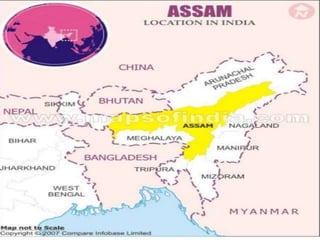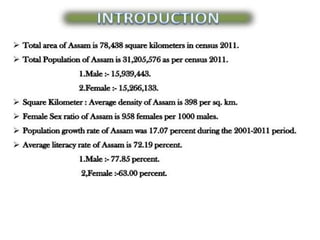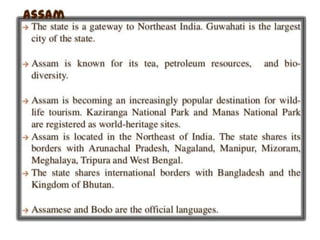1 of 7
Download to read offline







Ad
Recommended
R198 §§§»§¶§ø§±§“§≥?»˝∆÷ó˜◊” (2016ƒÍ8‘¬).»’±æ»À§Œ≈RÀ¿ÃÂÚY§ŒÃÿè’£∫ÃÂÚY”õÂh§Œ•∆•≠•π•»•fi•§•À•Û•∞°° Journal of Internatio...
R198 §§§»§¶§ø§±§“§≥?»˝∆÷ó˜◊” (2016ƒÍ8‘¬).»’±æ»À§Œ≈RÀ¿ÃÂÚY§ŒÃÿè’£∫ÃÂÚY”õÂh§Œ•∆•≠•π•»•fi•§•À•Û•∞°° Journal of Internatio...Takehiko Ito
?
R198 §§§»§¶§ø§±§“§≥?»˝∆÷ó˜◊” (2016ƒÍ8‘¬).»’±æ»À§Œ≈RÀ¿ÃÂÚY§ŒÃÿè’£∫ÃÂÚY”õÂh§Œ•∆•≠•π•»•fi•§•À•Û•∞°° Journal of International Society of Life Information Science, 34(2), 123-125.G215 §§§»§¶§ø§±§“§≥ (2014). »ÀÈg§Œ–“∏£§Àÿïœ◊§π§Î•·•«•£•¢§»§œ£ø: √◊π˙§Œ£π£±£±§´§È£≥£±£±§Œ»’±æ§ÿ§ŒÜñÓ}µ„§»’nÓ} µ⁄38ªÿ…˙√¸«ÈàÛø∆—ß•∑•Û•›•∏...
G215 §§§»§¶§ø§±§“§≥ (2014). »ÀÈg§Œ–“∏£§Àÿïœ◊§π§Î•·•«•£•¢§»§œ£ø: √◊π˙§Œ£π£±£±§´§È£≥£±£±§Œ»’±æ§ÿ§ŒÜñÓ}µ„§»’nÓ} µ⁄38ªÿ…˙√¸«ÈàÛø∆—ß•∑•Û•›•∏...Takehiko Ito
?
G215 §§§»§¶§ø§±§“§≥ (2014). »ÀÈg§Œ–“∏£§Àÿïœ◊§π§Î•·•«•£•¢§»§œ£ø: √◊π˙§Œ£π£±£±§´§È£≥£±£±§Œ»’±æ§ÿ§ŒÜñÓ}µ„§»’nÓ} µ⁄38ªÿ…˙√¸«ÈàÛø∆—ß•∑•Û•›•∏•¶•‡:µ⁄38ªÿπ˙ÎH…˙√¸«ÈàÛø∆—ߪ·£®ISLIS £©—ß–g¥Ûª·°æ•fl•À•∑•Û•›°ø°∏»ÀÈg§Œ–“∏£§Œ§ø§·§Œ–ƒ¿Ì—ß°π¢‹°°2014ƒÍ8‘¬24»’£®»’£©ŒÁ«∞(90∑÷)°°…Ω¿Ê±h°°±±∂≈ –?âà∏ªŒ¬»™œøR130 –°∆Ω≈ÛΩ≠?§§§»§¶§ø§±§“§≥?¥Û∏fl”π∆Ω (2010). Ωy∫œ ß’{÷¢§ŒÍL≤°”õ§Œ∑÷Œˆ£∫π≈¥®ƒŒ∂º◊”°∫–ƒ§Ú≤°§‡§√§∆§…§¶§§§¶§≥§»£ø£∫æ´…Ò≤°§ŒÃÂÚY’fl§Ë§Í°ª§Œòã‘Ï...
R130 –°∆Ω≈ÛΩ≠?§§§»§¶§ø§±§“§≥?¥Û∏fl”π∆Ω (2010). Ωy∫œ ß’{÷¢§ŒÍL≤°”õ§Œ∑÷Œˆ£∫π≈¥®ƒŒ∂º◊”°∫–ƒ§Ú≤°§‡§√§∆§…§¶§§§¶§≥§»£ø£∫æ´…Ò≤°§ŒÃÂÚY’fl§Ë§Í°ª§Œòã‘Ï...Takehiko Ito
?
R130 –°∆Ω≈ÛΩ≠?§§§»§¶§ø§±§“§≥?¥Û∏fl”π∆Ω (2010). Ωy∫œ ß’{÷¢§ŒÍL≤°”õ§Œ∑÷Œˆ£∫π≈¥®ƒŒ∂º◊”°∫–ƒ§Ú≤°§‡§√§∆§…§¶§§§¶§≥§»£ø£∫æ´…Ò≤°§ŒÃÂÚY’fl§Ë§Í°ª§Œòã‘ϧŒ•∆•≠•π•»•fi•§•À•Û•∞°°»’±ææ´…Ò±£Ω°ø¥◊o—ߪ·’I, 19(2), 10-21. R018 …ºÃÔ√˜∫Í?ªƒŒ≤ÿ듪?“¡ÃŸŒ‰— (1988). ∆Ω∫Õ§ÚÑì§Î°°–ƒ¿Ìø∆—ß—–æøª·£®æ飩°°§´§ø§Í§¢§¶«‡ƒÍ–ƒ¿Ì—ß°°«‡ƒæﯵÍ(pp. 193 221.£©
R018 …ºÃÔ√˜∫Í?ªƒŒ≤ÿ듪?“¡ÃŸŒ‰— (1988). ∆Ω∫Õ§ÚÑì§Î°°–ƒ¿Ìø∆—ß—–æøª·£®æ飩°°§´§ø§Í§¢§¶«‡ƒÍ–ƒ¿Ì—ß°°«‡ƒæﯵÍ(pp. 193 221.£©Takehiko Ito
?
R018 …ºÃÔ√˜∫Í?ªƒŒ≤ÿ듪?“¡ÃŸŒ‰— (1988). ∆Ω∫Õ§ÚÑì§Î°°–ƒ¿Ìø∆—ß—–æøª·£®æ飩°°§´§ø§Í§¢§¶«‡ƒÍ–ƒ¿Ì—ß°°«‡ƒæﯵÍ(Pp. 193-221.£©R059 “¡ÃŸŒ‰— (1997). ”ãÀ„Ωy”ã—ߧŒ◊ÓΩ¸§ŒÑ”œÚ£∫π≤∑÷…¢òã‘Ï∑÷Œˆ§Œ¿Ì’짻èÍ”√°°ñ|Œ˜ƒœ±±1997£∫∫Õπ‚¥Û—ßæt∫œŒƒªØ—–æøÀ˘ƒÍàÛ,°°128-137.
R059 “¡ÃŸŒ‰— (1997). ”ãÀ„Ωy”ã—ߧŒ◊ÓΩ¸§ŒÑ”œÚ£∫π≤∑÷…¢òã‘Ï∑÷Œˆ§Œ¿Ì’짻èÍ”√°°ñ|Œ˜ƒœ±±1997£∫∫Õπ‚¥Û—ßæt∫œŒƒªØ—–æøÀ˘ƒÍàÛ,°°128-137.Takehiko Ito
?
R059 “¡ÃŸŒ‰— (1997). ”ãÀ„Ωy”ã—ߧŒ◊ÓΩ¸§ŒÑ”œÚ£∫π≤∑÷…¢òã‘Ï∑÷Œˆ§Œ¿Ì’짻èÍ”√°°ñ|Œ˜ƒœ±±1997£∫∫Õπ‚¥Û—ßæt∫œŒƒªØ—–æøÀ˘ƒÍàÛ,°°128-137.R040 Sugita, A., & Ito, T. (1994). The relationship between attitude and acti...
R040 Sugita, A., & Ito, T. (1994). The relationship between attitude and acti...Takehiko Ito
?
This study explores the relationship between Japanese adolescents' socio-political attitudes and real political activity, particularly regarding nuclear disarmament and peace movements. Results indicate that while students express high interest and consider peace issues important, their active involvement in peace activities is hindered by perceived challenges and contradictions in Japan°Øs political environment. The findings reveal a strong motivation for participation linked to their experiences, alongside a notable conflict between supportive attitudes toward peace and lower evaluations of participation experiences.G094 “¡ÃŸŒ‰—Â?∑ºù…∫Íò‰?æÆ…œ–¢¥˙ (2008). PAC∑÷Œˆ§Œíàè৻§∑§∆§ŒHITY∑®§À§Ë§ÎÇÄ»ÀÑeëB∂»òã‘Ï∑÷Œˆ£∫∏∏ƒ∏Èg§Œ◊””˝§∆”Q§Ú±»›^§∑§øHITY∑®...
G094 “¡ÃŸŒ‰—Â?∑ºù…∫Íò‰?æÆ…œ–¢¥˙ (2008). PAC∑÷Œˆ§Œíàè৻§∑§∆§ŒHITY∑®§À§Ë§ÎÇÄ»ÀÑeëB∂»òã‘Ï∑÷Œˆ£∫∏∏ƒ∏Èg§Œ◊””˝§∆”Q§Ú±»›^§∑§øHITY∑®...Takehiko Ito
?
G094 “¡ÃŸŒ‰—Â?∑ºù…∫Íò‰?æÆ…œ–¢¥˙ (2008). PAC∑÷Œˆ§Œíàè৻§∑§∆§ŒHITY∑®§À§Ë§ÎÇÄ»ÀÑeëB∂»òã‘Ï∑÷Œˆ£∫∏∏ƒ∏Èg§Œ◊””˝§∆”Q§Ú±»›^§∑§øHITY∑®¢ÚÓê§Ú÷––ƒ§À°°£–£¡£√∑÷Œˆ—ߪ·µ⁄2ªÿ¥Ûª·°°ñ|∞Ó¥Û—ß°°2008ƒÍ12‘¬£∂»’£®Õ¡£©G089 Yoshizawa, Ito, T., & Inoue, T. (2008). Roles and meanings of childrear...
G089 Yoshizawa, Ito, T., & Inoue, T. (2008). Roles and meanings of childrear...Takehiko Ito
?
The document explores the evolving roles of childrearing in Japan, highlighting the shift from traditional gender roles to greater equality in parenting responsibilities. It examines the differing perceptions and evaluations of childrearing behaviors among husbands and wives through a study involving interviews and analysis of images of parenting. The findings suggest that understanding each other's childrearing perspectives can lead to more cooperative parenting and lessen the burden on couples.Number system
Number systemThe millennium school
?
The document discusses different number systems including decimal, binary, octal, and hexadecimal. It provides details on the base and digits used for each system. The decimal system uses base 10 and digits 0-9, binary uses base 2 and digits 0-1. Octal uses base 8 and digits 0-7, with the first digit being 0. Hexadecimal uses base 16 and digits 0-9 plus A-F. Examples are given for number representations and conversions between decimal and binary.Heart and blood
Heart and bloodThe millennium school
?
The heart is a muscular pump that works continuously to circulate blood throughout the body via the circulatory system. It has two sides - the right side pumps deoxygenated blood to the lungs to receive oxygen, while the larger and more powerful left side pumps the oxygenated blood from the lungs throughout the rest of the body. In a never-ending cycle, the blood delivers oxygen and nutrients to tissues before returning to the heart low in oxygen to repeat the process, ensuring a constant supply of vital resources is transported non-stop to every part of the body.Himachal pradesh
Himachal pradeshThe millennium school
?
Himachal Pradesh is known for its natural beauty, with lush green valleys, snow-covered Himalayan ranges, and a peaceful environment. Tourism is a major industry, contributing around 8% to the state's economy. The state aims to establish itself as a leading tourist destination and use tourism to promote economic development and employment. Some of its strengths that attract tourists year-round include a variety of seasons and rich cultural heritage sites. The state bird is the monal, and the Rohtang Pass divides different culture regions in the state. The region has diverse flora ranging from alpine meadows to rhododendrons, as well as cultural festivals like the Kullu Dussehra. Local attractions alsoRuskin bond
Ruskin bondThe millennium school
?
Ruskin Bond is an Indian author who was born in 1934 in Kasaulli, Himachal Pradesh and now lives in Landour, Mussoorie. Some of his famous novels include The Room on the Roof, The Blue Umbrella, A Flight for Pigeons, and Our Trees Still Grow in Dehra. He has received several awards for his work, including the Padma Shree in 1999 for children's literature and the Sahitya Akademi Award in 1992 for Our Trees Still Grow in Dehra. Most of Bond's works are influenced by his childhood spent in the hill stations of the Himalayas, where he wrote his first novel The Room on the Roof at age 17Robin hood
Robin hoodThe millennium school
?
Robin Hood and his band of Merry Men, dressed in Lincoln green clothes, were famous for robbing from the rich and giving to the poor. Prince John ruled as a cruel king in place of his brother, King Richard, and tried to kill Robin Hood. The Sheriff of Nottingham was tasked with capturing outlaws like Robin Hood and keeping them from poaching the King's deer, and was the principal villain in stories about Robin Hood. Maid Marian was Robin Hood's love interest. Friar Tuck and Little John were companions of Robin Hood, with Little John serving as his chief lieutenant.computer languages
computer languagesThe millennium school
?
A programming language allows humans to write programs that instruct computers to perform tasks. Programming languages can be classified as low-level languages that are closer to machine code like assembly, or high-level languages that are easier for humans to read and write like Python and Java. The document outlines different types of programming languages including low-level languages that are machine-oriented and specific, assembly languages that use symbols instead of binary, and high-level languages that are easier for humans, more portable between machines, and abstracted from the underlying hardware.Conservation of natural_resources (1)
Conservation of natural_resources (1)The millennium school
?
The document discusses the importance of conserving natural resources. It notes that as human populations and consumption increase, proper management of resources is needed to prevent exploitation and ensure availability for future generations. Conservation involves sustainable use of resources to protect the environment and maintain ecological balance. Various Indian traditions also emphasized protecting nature through sacred groves and forests, and conservation continues to be important today.More Related Content
More from The millennium school (7)
Number system
Number systemThe millennium school
?
The document discusses different number systems including decimal, binary, octal, and hexadecimal. It provides details on the base and digits used for each system. The decimal system uses base 10 and digits 0-9, binary uses base 2 and digits 0-1. Octal uses base 8 and digits 0-7, with the first digit being 0. Hexadecimal uses base 16 and digits 0-9 plus A-F. Examples are given for number representations and conversions between decimal and binary.Heart and blood
Heart and bloodThe millennium school
?
The heart is a muscular pump that works continuously to circulate blood throughout the body via the circulatory system. It has two sides - the right side pumps deoxygenated blood to the lungs to receive oxygen, while the larger and more powerful left side pumps the oxygenated blood from the lungs throughout the rest of the body. In a never-ending cycle, the blood delivers oxygen and nutrients to tissues before returning to the heart low in oxygen to repeat the process, ensuring a constant supply of vital resources is transported non-stop to every part of the body.Himachal pradesh
Himachal pradeshThe millennium school
?
Himachal Pradesh is known for its natural beauty, with lush green valleys, snow-covered Himalayan ranges, and a peaceful environment. Tourism is a major industry, contributing around 8% to the state's economy. The state aims to establish itself as a leading tourist destination and use tourism to promote economic development and employment. Some of its strengths that attract tourists year-round include a variety of seasons and rich cultural heritage sites. The state bird is the monal, and the Rohtang Pass divides different culture regions in the state. The region has diverse flora ranging from alpine meadows to rhododendrons, as well as cultural festivals like the Kullu Dussehra. Local attractions alsoRuskin bond
Ruskin bondThe millennium school
?
Ruskin Bond is an Indian author who was born in 1934 in Kasaulli, Himachal Pradesh and now lives in Landour, Mussoorie. Some of his famous novels include The Room on the Roof, The Blue Umbrella, A Flight for Pigeons, and Our Trees Still Grow in Dehra. He has received several awards for his work, including the Padma Shree in 1999 for children's literature and the Sahitya Akademi Award in 1992 for Our Trees Still Grow in Dehra. Most of Bond's works are influenced by his childhood spent in the hill stations of the Himalayas, where he wrote his first novel The Room on the Roof at age 17Robin hood
Robin hoodThe millennium school
?
Robin Hood and his band of Merry Men, dressed in Lincoln green clothes, were famous for robbing from the rich and giving to the poor. Prince John ruled as a cruel king in place of his brother, King Richard, and tried to kill Robin Hood. The Sheriff of Nottingham was tasked with capturing outlaws like Robin Hood and keeping them from poaching the King's deer, and was the principal villain in stories about Robin Hood. Maid Marian was Robin Hood's love interest. Friar Tuck and Little John were companions of Robin Hood, with Little John serving as his chief lieutenant.computer languages
computer languagesThe millennium school
?
A programming language allows humans to write programs that instruct computers to perform tasks. Programming languages can be classified as low-level languages that are closer to machine code like assembly, or high-level languages that are easier for humans to read and write like Python and Java. The document outlines different types of programming languages including low-level languages that are machine-oriented and specific, assembly languages that use symbols instead of binary, and high-level languages that are easier for humans, more portable between machines, and abstracted from the underlying hardware.Conservation of natural_resources (1)
Conservation of natural_resources (1)The millennium school
?
The document discusses the importance of conserving natural resources. It notes that as human populations and consumption increase, proper management of resources is needed to prevent exploitation and ensure availability for future generations. Conservation involves sustainable use of resources to protect the environment and maintain ecological balance. Various Indian traditions also emphasized protecting nature through sacred groves and forests, and conservation continues to be important today.